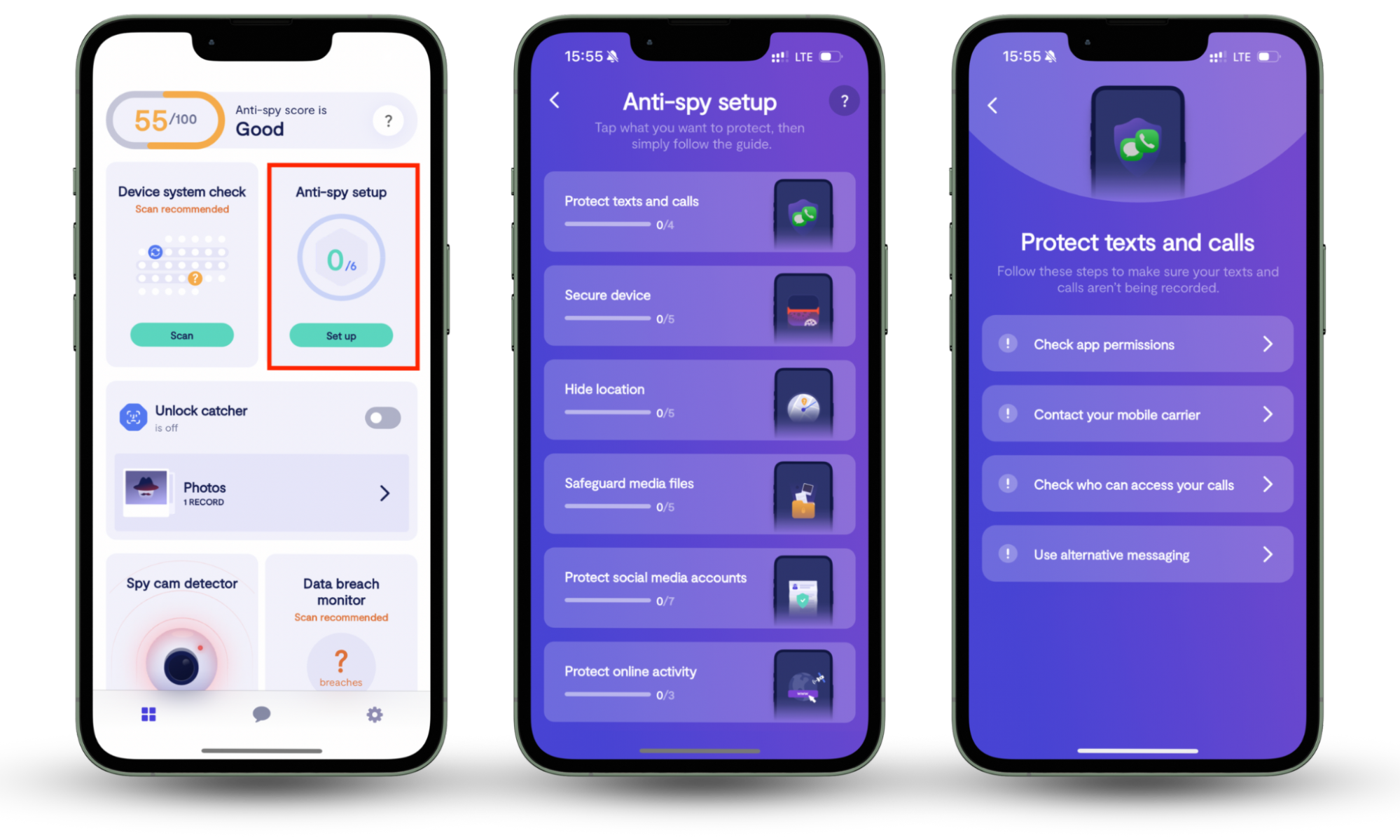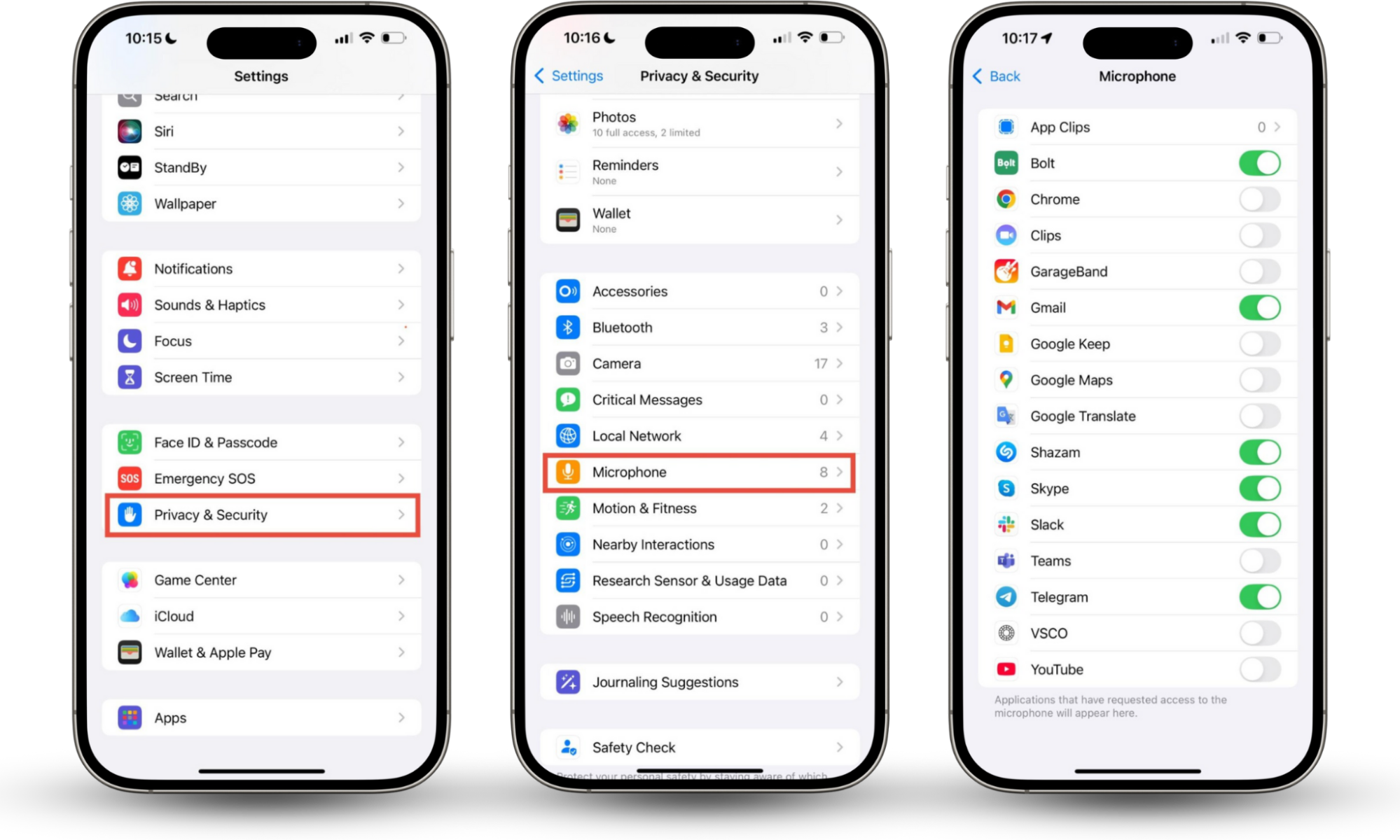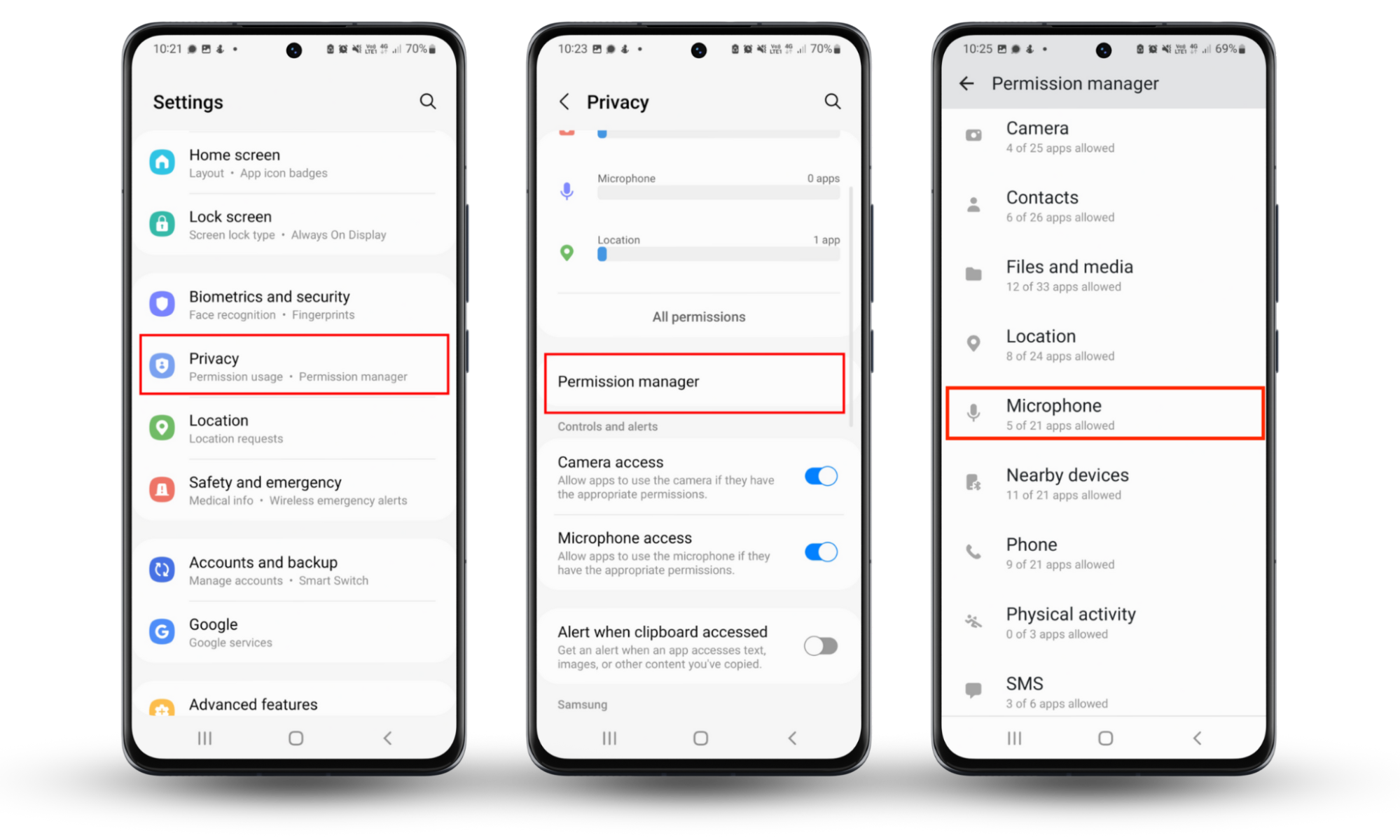Table of contents
- How headphones can spy on you
- 1. Headphones can be hijacked and used as microphones
- 2. Audio jack retasking through Realtek codec exploit
- 3. Bluetooth headphones and wireless snooping risks
- 4. Malware with microphone access using headphone inputs
- 5. USB-C and Lightning headphones as potential spy vectors
- How to protect your devices from headphone-based spying
- 1. Disable microphone access for untrusted apps
- 2. Avoid using cheap audio peripherals from unknown brands
- 3. Use hardware that separates the mic and audio jacks
- Conclusion
How headphones can spy on you
Headphones can spy on you when hackers exploit their technological vulnerabilities. Using some tricks, they turn your ordinary headphones into tools for eavesdropping. Hackers can do it in several ways:
- hijacking headphones to be used as microphones
- retasking audio jack through Realtek codec
- intercepting Bluetooth headphones for wireless snooping
- using malware with microphone access
- using USB-C and Lightning headphones as spy vectors
Read more: Worried your partner might be spying on you via AirTag? Read more about spouse AirTag stalking and how to stop it.
1. Headphones can be hijacked and used as microphones
What may come as a surprise is that headphones can be repurposed as makeshift microphones. A team of scientists at Ben-Gurion University created an experimental malware that can infect a computer and modify its audio drivers. This malware can transform input jacks (designed for microphones) into output jacks (for speakers and headphones) and vice versa.
Using this kind of malicious software, hackers can spy on your conversations and record audio with your own headphones.
2. Audio jack retasking through Realtek codec exploit
Realtek is a popular audio chip with a core feature that allows for jack retasking. So, a headphone jack (audio output) can be altered to work as an input port. Hackers can intercept audio through your headphones. One of the signs that your conversation is being recorded is hearing strange sounds during the call. However, you might need to learn how to check if your phone is tapped as this may also be the reason for these sounds.
3. Bluetooth headphones and wireless snooping risks
Bluetooth headphones are comfy for hands-free calls, but they are prone to security risks. Hackers have a multitude of methods for intercepting Bluetooth connections. The most widely used include:
- Man-in-the-middle attack: hackers can position themselves in the middle of two devices the moment they establish a Bluetooth connection.
- Unauthorized device pairing: a Bluetooth device protected only with a default PIN or has weak authentication methods is prone to unauthorized pairing attacks.
- Exploiting outdated Bluetooth protocols: devices that run on legacy protocols (e.g., Bluetooth 2.1 and prior) most certainly harbor vulnerabilities.
Learn how to disable AirPods tracking so you can feel safe and sound about your privacy.
4. Malware with microphone access using headphone inputs
Some types of spying apps exploit your device's microphone permissions. When you grant access to your microphone, these apps can secretly use your device’s microphone or even its headphones when functioning as fallback microphones to record audio without you knowing.
Since this attack happens via app’s access requests, be sure to always check and revoke suspicious permissions. Clario Anti Spy can help you handle this task easily. Clario Anti-spy setup feature checks and detects apps with unnecessary permissions. It can also protect your text and calls, hide your location, and boost the overall security of your device.
Here’s how to start with Clario Anti-spy setup:
- Download Clario Anti Spy app and set up an account.
- Under the Anti-spy setup, click Set up.
- Choose what you want to protect and follow the guide.

5. USB-C and Lightning headphones as potential spy vectors
USB-C and Lightning headphones are known for their superior sound quality. Modern models have built-in microcontrollers that expand their functionality. For instance, they can collect and transmit more data than traditional analog headphones. However, if hackers tamper with the microcontrollers, they could intercept the data that headphones transmit or even send their malicious data.
How to protect your devices from headphone-based spying
Now that you know headphones can spy on you, it's time to learn how to prevent it.
1. Disable microphone access for untrusted apps
Regularly check app permissions and revoke microphone access for apps that don’t need it. Also, it’s best to remove permissions for apps you rarely use.
Here’s how to check permissions on iOS:
- Go to Settings > Privacy & Security > Microphone.
- From there, you can manage which apps have access.

Here’s how to check permissions on Android:
- Go to Settings > Apps > App Permissions.
- Tap on Microphone to manage controls.

Pro tip
Use Clario’s Anti-spy setup to guide you through managing permissions and fortifying your device against threats.
2. Avoid using cheap audio peripherals from unknown brands
Budget-friendly audio peripherals can be tempting. However, more often than not, cheap gadgets lack rigorous manufacturing standards. Also, cheap headphones might carry vulnerable firmware or even spyware. Whether put there intentionally or not, they may put your privacy at risk.
For your own peace of mind, invest in high-quality headphones from reputable brands. Spending a bit more upfront can save you from potential privacy issues later.
3. Use hardware that separates the mic and audio jacks
If possible, use adaptors with separate headphone/microphone plugs instead of a shared one. Why? A single shared jack raises the possibility of a retasking exploit when hackers repurpose input into output. With separate jacks, your headphones are limited to audio output. This adds another safety layer to your setup.
Conclusion
Headphones can spy on you when hackers repurpose them to work as mics and collect and intercept data. Bluetooth headphones are in the risk zone, especially when built on legacy protocols. In addition, hackers can attack USB-C and Lightning headphones when used via a single port.
But no worries, with the right tools at hand and proper digital hygiene, you can minimize your exposure to spying. Double-check apps that request permissions and invest in deices from trusted brands. For ultimate protection, use Clario’s Anti-spy setup to secure your device and make spying a thing of the past.


